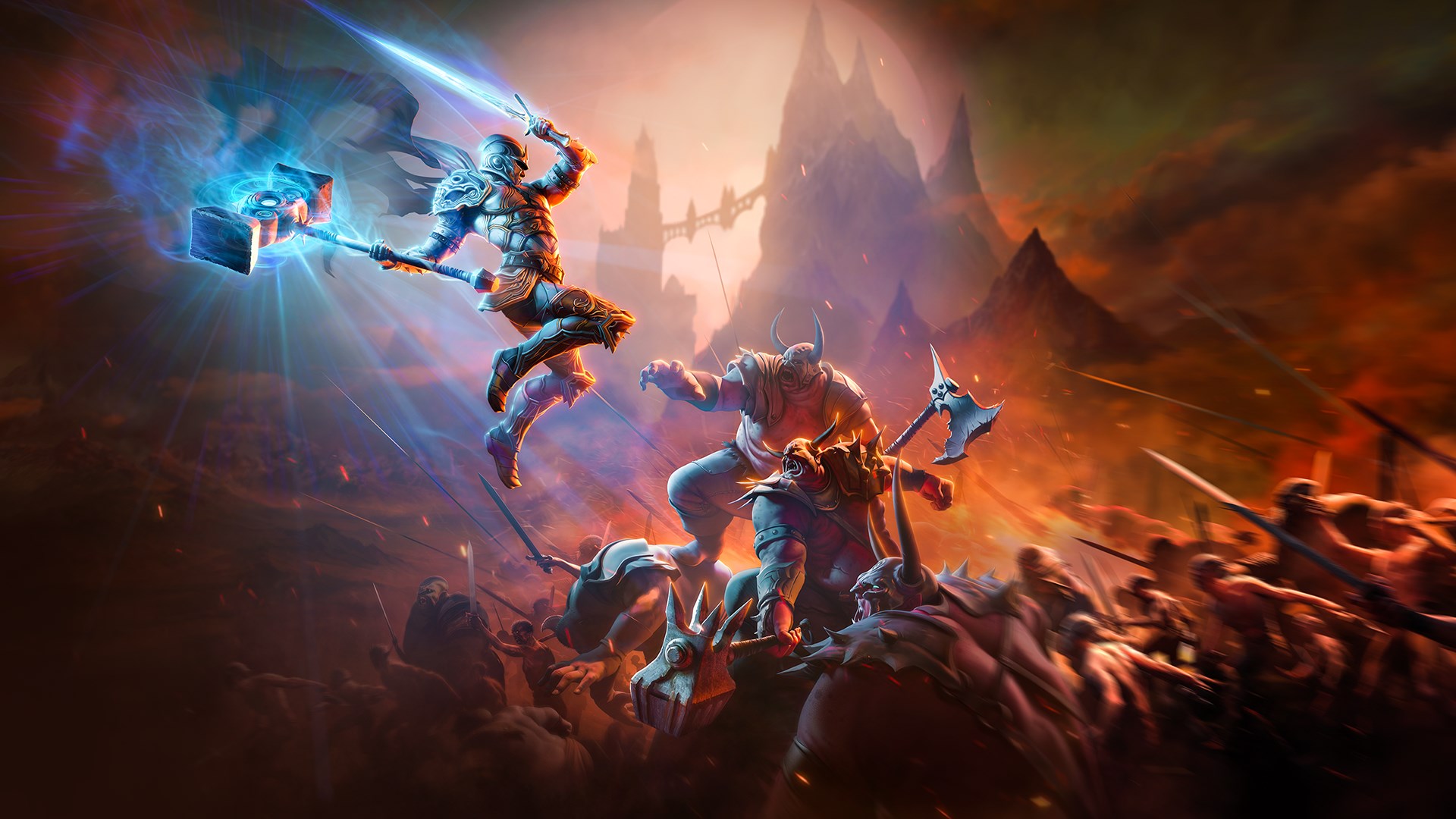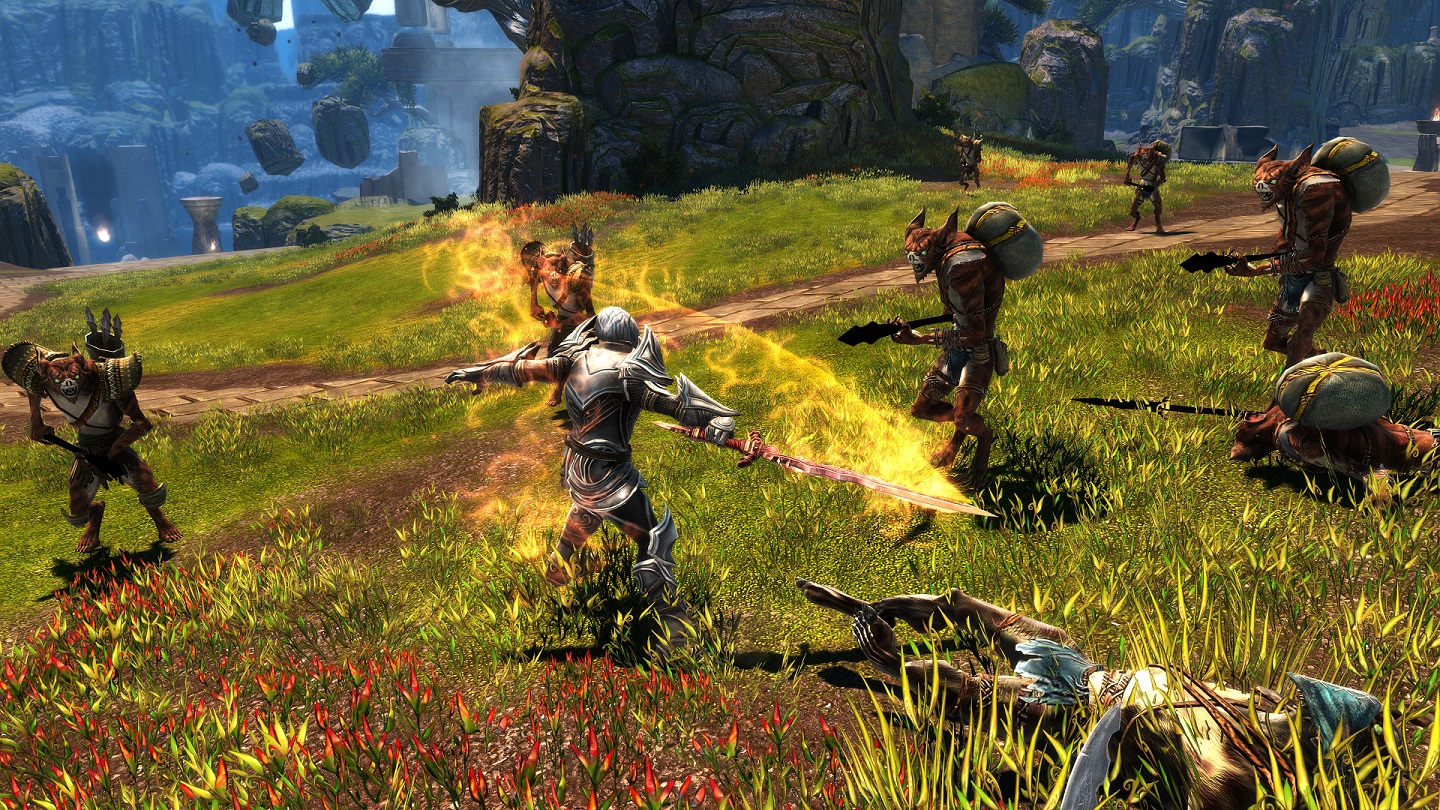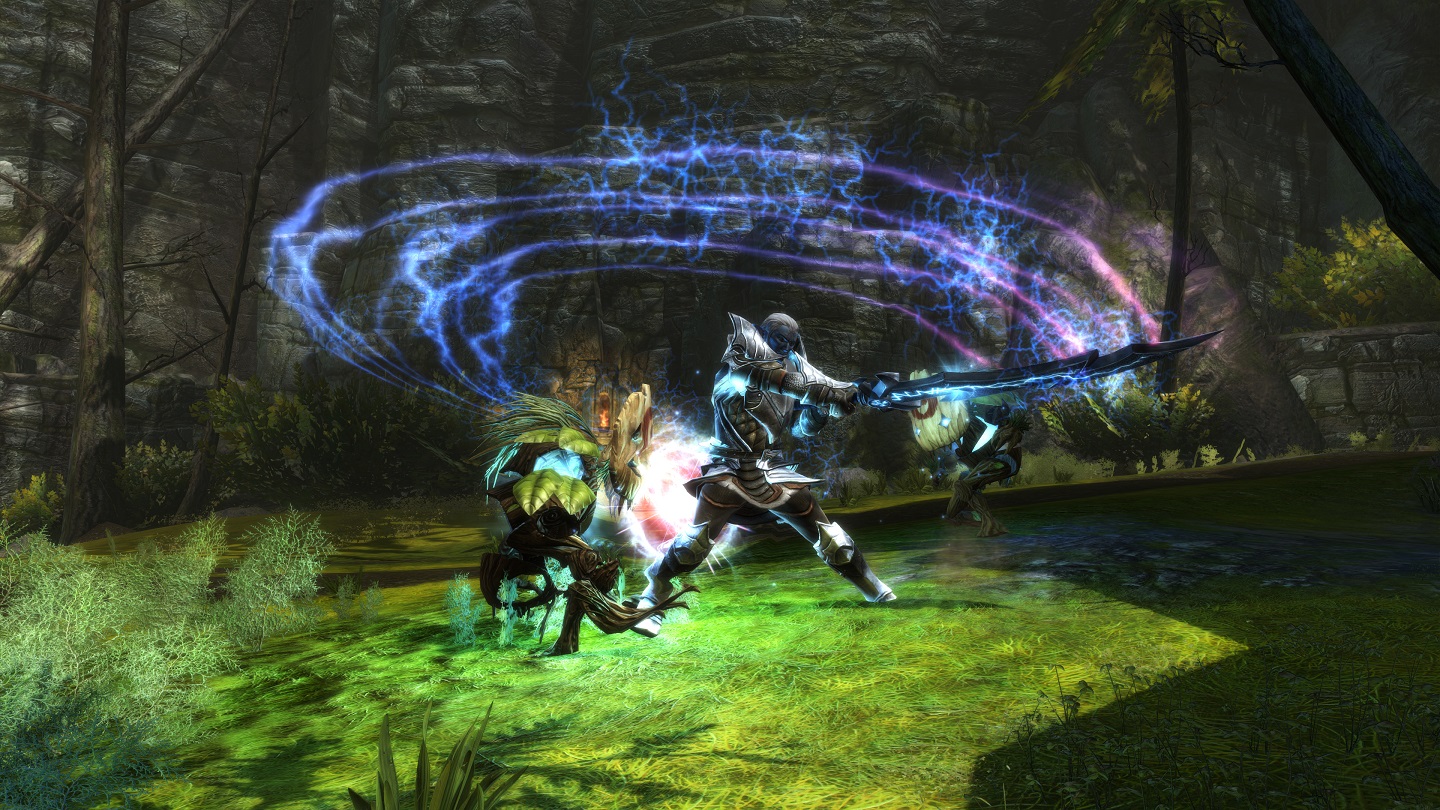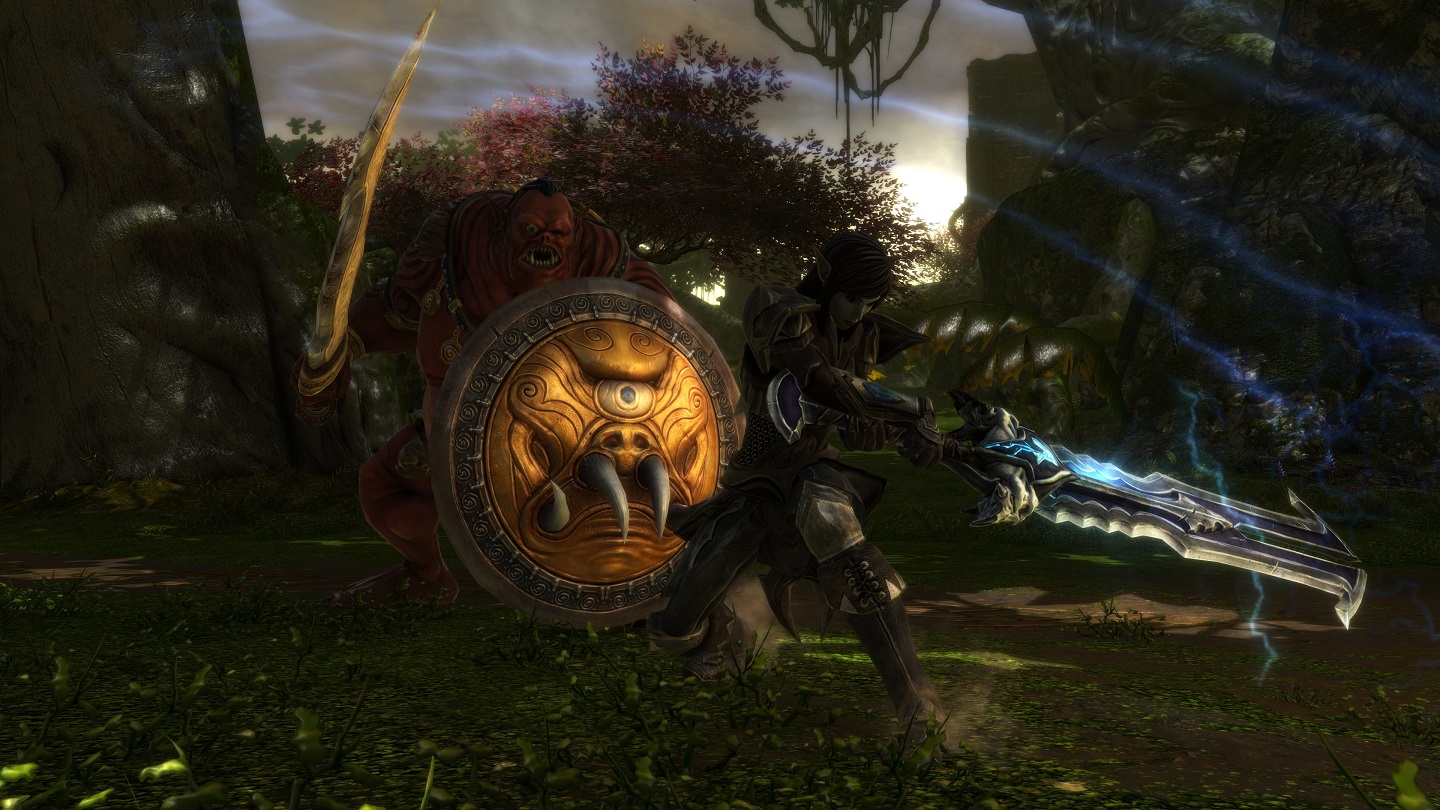The original Kingdoms of Amalur: Reckoning was a perfect storm of creative talent joining forces to make an excellent game that, for a variety of reasons, just didn’t sell that well.
Maybe it’s because it released in the middle of February, a weird time to launch a game. Maybe it’s because it came out just a few months after The Elder Scrolls V: Skyrim and gamers were still entranced with Bethesda’s RPG epic. Maybe the budget just got too big, too fast and the sales requirements were unrealistic. Or maybe it’s a little bit of all those things.
The original release has an 81 on Metacritic, which is about as good as anyone can realistically hope for with a brand new IP from an unknown studio, yet it still “failed” commercially and collapsed the entire company.
Now, more than eight years later, there’s a chance for redemption.
Kingdoms of Amalur: Re-Reckoning might have one of the worst titles ever for a remastered re-release, but thankfully, that doesn’t reflect on its quality. THQ Nordic has taken what was already a rock-solid action RPG, improved the pacing and balance, and shined up the visuals just a tad to give us what I think is one of the purest, most streamlined, and downright fun-to-play RPGs of this entire generation.
Kingdoms of Amalur: Re-Reckoning Review — Action RPG Bliss
In Kingdoms of Amalur, you take on the role of The Fateless One, a resurrected hero that’s come back to life after an untimely demise. In this world, Fate rules all. Everyone has their entire lives planned out as it connects to everything else in the “Tapestry of Fate,” which means free will is only possible insofar as day-to-day decisions, but everything from the major milestones of life to exactly when and how you die is pre-determined.
Fateweavers are wise beings that have the ability to see someone’s fate, including their death. However, the player’s character is an anomaly: since they’ve been resurrected, they exist outside of Fate’s plan.
This means that not only can you do or be whatever you want (a clever in-game explanation for the class and ability upgrade system) but you can also affect things around you in a way that severs the bonds to the Tapestry. This includes preventing someone from dying when they’re supposed to.
Narratively, Amalur‘s got a lot going on. Even if you try to mainline the game and just focus almost entirely on the main quest, it will still take you around 30 hours to complete. But it’ll likely be around 10 hours more than that for most people because staying away from all the game’s side content is pretty tough.
If you tried to complete everything Amalur has to offer, plus the two side DLC stories that are included here for free, you’re looking at well over 100 to 150 hours of content. Easy.
Not only is a lot of it actually interesting, but leveling up a bit more near the end is very useful.
There were some serious pacing issues in the original game. By the time you were midway through your adventure, you would have likely out-leveled everything. Entire regions were designed around certain level ranges and if you happened to spend a lot of time questing and leveling early on, you’d breeze through later zones. Loot didn’t keep up with your level either and by the 10-hour mark, it was just boring.
THQ Nordic has fixed all that with the remaster.
Now, when you are exploring a zone, enemies are semi-scaled off of the player based on a level range. Eventually, you will become super powerful — if you return to the starting region after 20 hours, you’re gonna feel like a badass, of course — but as you enter new areas along the way, you’ll find they won’t be an absolute cakewalk anymore, even on the base Normal difficulty.
The same goes for loot: you’ll generally and more consistently find things that are actually useful for your level and your playstyle.
Adjusting all of that is just about all they did with this remaster, other than upgrading the resolution a bit. But that’s all the game needed to really shine. As it stands now, Kingdoms of Amalur is one of the best action RPGs you can play.
Combat has always been one of its strong points, which isn’t always the case in RPGs. In Amalur, you’ve got a primary weapon slot, secondary weapon slot, shield, and up to eight abilities at all times. I typically run with a greatsword as my primary, then chakras (disc blades that are also like boomerangs) as my secondary — or a bow if I needed real range.
Everything is combo-based, so you’ll be mashing attack buttons often. But chaining together your primary and secondary weapons, charging up attacks, dodge rolling, blocking, parrying, and using abilities to set up combos is all super fluid and exciting. By the three- or four-hour mark, things start to really click, despite the lack of a target lock-on camera like in Zelda or Dark Souls, something that’s sorely missing.
Each time you level up, you can increase a single skill line for things like Blacksmithing, Lockpicking, Persuasion, or another soft passive skill, and you also get to invest three ability points between the Might, Magic, or Finesse ability trees.
On top of all that, you can select a new “Destiny” at each level up based on the Destiny Cards you’ve unlocked. These act like your “Class,” which can be altered each level up or by speaking with a Fateweaver. They provide targeted passive bonuses to amplify your chosen playstyle, such as increasing your physical attack damage or improving your stealth kills.
It’s a good system with lots of depth and customization. Plus, you can refund everything for a small fee at any Fateweaver, so experimentation is encouraged.
Kingdoms of Amalur: Re-Reckoning Review — The Bottom Line
Pros:
- Small tweaks fixed the pacing and (lack of) difficulty curve of original
- Engrossing story about defying Fate
- Fantastic fast-paced combat
- Tons of loot with lots of fun crafting mechanics
- Massive game world teeming with quests and stories to uncover
Cons:
- Handful of minor bugs pop up every now and then
- Lack of lock-on for combat is annoying at first
Kingdoms of Amalur: Re-Reckoning feels like a breath of fresh air. Just like the game’s protagonist, it rises from the ashes, with a blank slate and zero expectations, to deliver a powerful story, addictive gameplay, and a shockingly stylish world that’s pulsing with personality and is ripe for exploration.
Leveraging the narrative muscles of legendary author R. A. Salvatore, the creative mind of Todd McFarlane, and the design pedigree of Ken Rolston, it’s a game that finally has room to shine over eight years after its initial release. All fans of RPGs, good stories, creative worlds, and fun combat owe it to themselves to give Kingdoms of Amalur a try.
It’s the kind of world that I relish the ability to get lost in.
As I’m writing this, I’m eager to return to see what new stories I can uncover or what new ability I might unlock next. It’s a captivating world that leaves you yearning for more in all the best ways.
If we’re lucky, maybe this re-release will point towards the possibility of a sequel. The sheer depth of detail in the Amalur‘s world-building feels like wasted potential if it’s just for a singular game. This needs to become the next great RPG franchise.
Not all games get a second chance and it has absolutely earned the right to be worthy of your attention.
[Note: THQ Nordic provided the copy of Kingdoms of Amalur: Re-Reckoning used for this review.]













Published: Sep 6, 2020 07:38 am